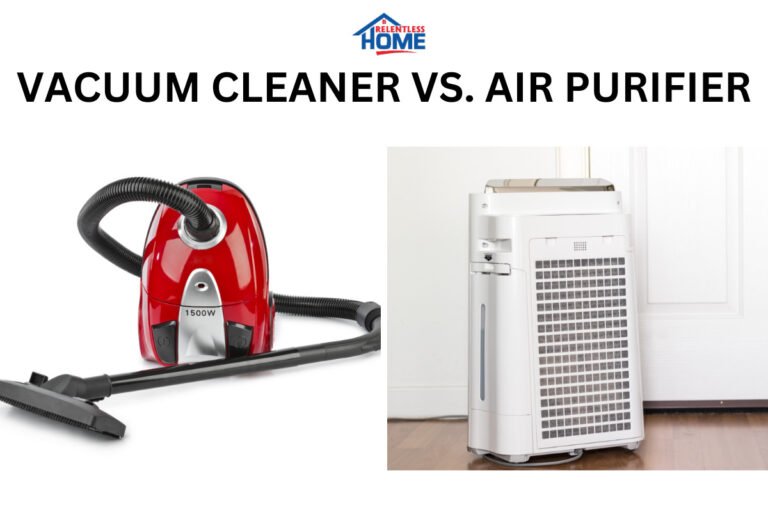Amperage Factor: How Many Amps Does a Vacuum Cleaner Use?
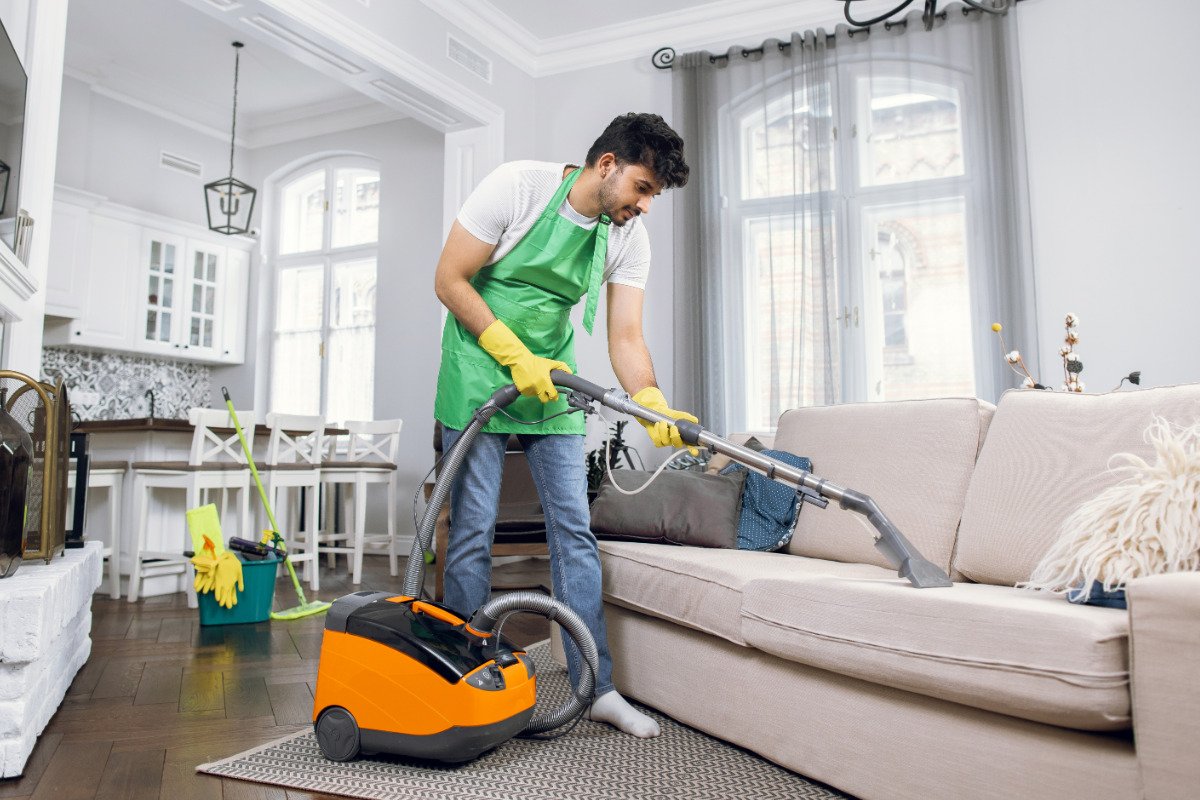
On a Saturday morning, you’re ready to fight the dust bunnies with your vacuum cleaner. When you turn on your vacuum, have you wondered, “Do vacuum cleaners use a lot of electricity?” or “How many amps does a vacuum cleaner use?”
Most don’t consider our appliances’ electricity usage until we receive a hefty bill or a tripped circuit breaker. Understanding how much power our gadgets consume is more significant than you realize.
By understanding the electricity consumption of products like your vacuum cleaner, you can make better energy use choices at home. This information may help you save energy expenses, enhance cleaning efficiency, and lengthen equipment life.
What Amps, Volts, and Watts Are?
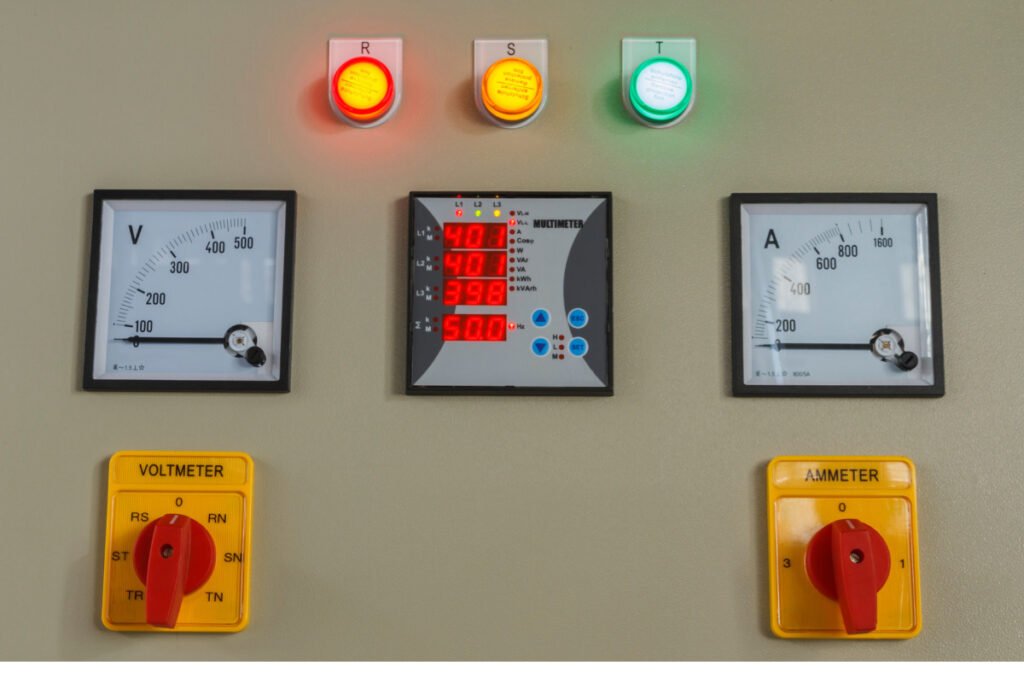
To comprehend how much energy your vacuum cleaner (or any other equipment) uses, you must learn about amps, volts, and watts. These may seem like arcane electrical jargon, but we’ll simplify them.
The fundamental unit of electric current is amps. Consider them electrical flow rates. Consider a river where the water symbolizes electricity and the air flow is amps. Amps increase with the current speed.
Next, volts. Voltage is ‘electric pressure.’ In our river scenario, volts would lead to water lift if amps were its pace.
Watts are last. Watts quantifies electricity’s performance per second. In our river example, watts are the total power created by water flowing at a specific speed (amps) and force (volts).
⚡How These Measurements Relate to Energy Use
Now that you’re acquainted with the basics let’s see how these electrical units interact and influence the energy use of your appliances. The important formula to remember is P=IV, where P represents power in watts, I stands for current in amps, and V is voltage in volts.
In simpler terms, you can determine the power (watts) used by an appliance like your vacuum cleaner by multiplying the current (amps) it draws by the voltage (volts) of your electricity supply. In most homes, this would be around 120 volts.
So, if you’re curious about how many air watts your vacuum cleaner uses, just look at its amp rating (usually written on the device or in the manual) and multiply that by your home’s voltage.
Understanding this interplay can be incredibly useful. It allows you to estimate the energy usage of your appliances and make more informed decisions about their usage. For instance, if you find out your vacuum cleaner has a high amp rating, you might use it less frequently or during off-peak electricity hours to save on your energy bill.
Remember, knowledge is power. In this case, understanding the power consumption of your appliances can save you power – and money!
Factors That Determine a Vacuum Cleaner’s Amp Usage
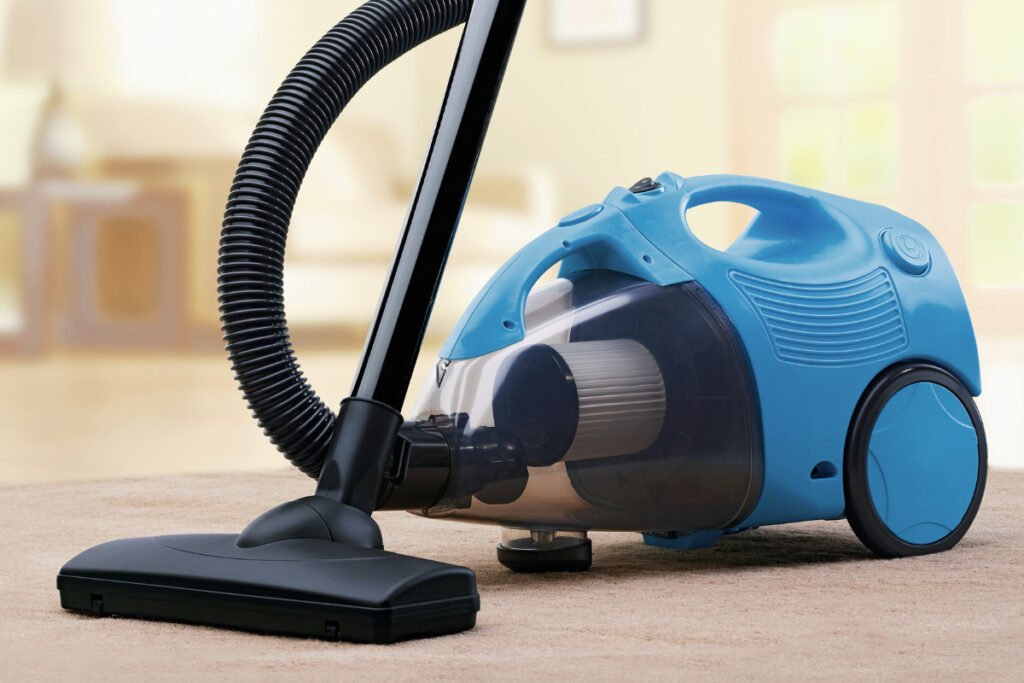
Now that we have a solid grasp of the basic units of electricity and their relation to energy usage let’s dive a little deeper. This section will explore the factors determining the number of amps a vacuum cleaner uses. It will further help you understand your vacuum cleaner’s energy usage and influence your decisions about when and how often to use it.
▶Motor Size
Every vacuum cleaner has a heart – the motor. This component generates the vacuum cleaner suction power Pa needed to pull in dust and debris, like how our heart pumps blood throughout our bodies. However, unlike our hearts, vacuums can have different motor sizes, and this variation directly impacts the amount of electricity, or amps, your vacuum cleaner uses.
Larger motors, typically found in heavy-duty vacuums designed for intensive cleaning, require more electricity. It leads to higher amp usage. In contrast, smaller motors, often seen in lightweight and portable vacuum cleaners meant for lighter cleaning tasks, draw less electricity and thus use fewer amps.
▶Efficiency of Design
When you look at your vacuum cleaner, you might only see its external design. But beneath its surface lies a world of intricacy that significantly determines its amp usage. An efficiently designed vacuum cleaner can achieve strong suction power without relying heavily on a large motor, thus conserving energy.
Other components, such as filters and dust bags, affect energy efficiency. For instance, a filter that clogs easily can force the motor to work harder to maintain suction, which increases amp usage. Similarly, a dust bag that is frequently full can impede air flow, again causing the motor to use more energy.
▶Settings Used
Have you ever fiddled with the different settings on your vacuum cleaner? These settings, often labeled high and low power, are not just fancy features. They directly influence the amp usage of your vacuum cleaner.
Using your vacuum cleaner in a high-power setting means the motor works faster to generate stronger suction, which also translates to higher electricity consumption. This setting could be your best friend when you’re dealing with stubborn dirt or need to deep clean carpets. Conversely, the low power setting, which uses fewer amps, is perfect for lighter cleaning tasks like removing dust or vacuuming hard floors.
By understanding these elements, you can become a savvier user of your vacuum cleaner. Knowing when to use the appropriate power setting can save energy without compromising the cleanliness of your home. Regular maintenance can ensure your vacuum cleaner operates optimally, minimizing unnecessary energy use.
How Many Amps Does a Vacuum Cleaner Use?
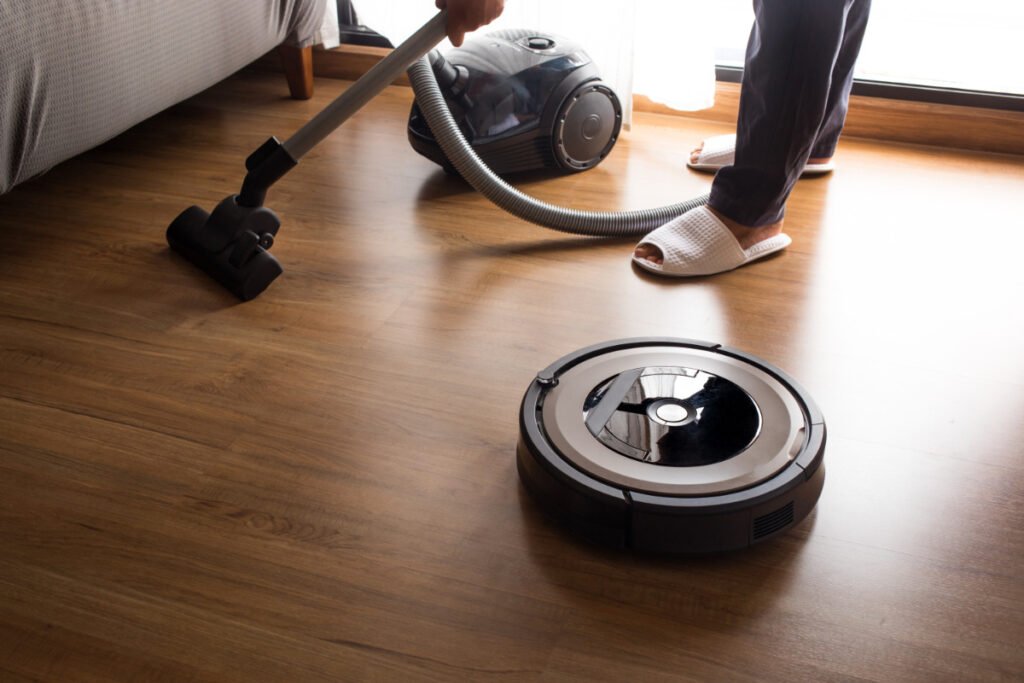
Now that we know what influences the amp usage of a vacuum cleaner let’s look at some average numbers for different types of vacuums. Note that these are just estimates, and actual numbers may vary depending on factors like motor size and efficiency.
💭Handheld Vacuums
Handheld vacuums are the compact, portable siblings in the vacuum cleaner family. They’re perfect for quick cleanups, reaching those tricky corners, and even giving your car interior a good dust-off. But how much electricity do these little powerhouses consume?
On average, handheld vacuums use around 2 to 7 amps. This range can vary depending on previously discussed factors, such as motor size and design efficiency. For instance, a handheld vacuum with a larger motor designed for more heavy-duty tasks might be at the higher end of the amp usage scale.
Despite this, handheld vacuums are generally energy-efficient, thanks to their smaller motor size and the fact that people often use them for shorter periods than their larger counterparts. So, rest assured that it won’t significantly reduce your energy usage next time you reach for your handheld vacuum.
💭Canister Vacuums
Regarding a versatile cleaning companion, a canister vacuum cleaner is hard to beat. Their powerful suction and ability to glide effortlessly across various surfaces make them popular with many households. But with great power, does there come great electricity consumption?
Canister vacuums typically use between 8 to 12 amps. Their higher amp usage compared to handheld vacuums can be due to their larger motors, which provide the strong suction power they’re renowned for. However, efficient design and technology have allowed many modern canister vacuums to maintain powerful performance without excessive energy usage.
Remember, the amp usage is just one side of the story. To gauge a vacuum cleaner’s energy efficiency, consider its performance relative to its power consumption. A canister vacuum might use more amps, but it could still be an energy-efficient choice if it gets done more quickly and effectively than a less powerful vacuum.
💭Upright Vacuums
Upright vacuums have been a long-standing favorite in many households, known for their robust cleaning capabilities and ease of storage. But with their hefty size and powerful performance, one might wonder about their electricity consumption.
On average, an upright vacuum cleaner uses around 10 to 12 amps of power. It is largely due to their larger motors, designed to deliver the high suction power required for deep-cleaning carpets and rugs. However, the amp usage can vary based on factors like the efficiency of the vacuum’s design and the power setting used.
While their amp usage might be higher than handheld or robotic vacuums, these vacuums offer a strong performance that can often make the extra power consumption worthwhile. So, when you’re powering through your cleaning tasks with an upright vacuum, remember that you’re using a tool designed for efficiency and effectiveness.
💭Robotic Vacuums
Robotic vacuums represent the forward march of technology into our everyday lives. These smart devices clean your floors autonomously and manage to do so while keeping energy usage impressively low.
Robotic vacuums typically consume around 2 to 4 amps of power. Their low amp usage can be due to their small size and smart design. Robotic vacuums use a variety of sensors and algorithms to navigate your home efficiently, avoiding obstacles and focusing on dirty areas. It means they often spend less time running than traditional vacuums, further conserving energy.
Despite their lower power consumption, robotic or cordless vacuums can still thoroughly clean, particularly for maintaining cleanliness between more intensive vacuuming sessions. It’s a testament that with smart design and technology, power efficiency and cleaning effectiveness can go hand in hand.
How to Check Your Vacuum Cleaner’s Amp Usage?
If you’re curious about the amp usage of your vacuum cleaner or want to ensure it’s operating at optimal efficiency, here’s a simple way to check its power consumption:
💥Looking at the Product Specifications
Product specifications are like a treasure map for your appliances. They hold valuable information about the appliance’s performance, including its power consumption. But how do we decipher this map regarding our vacuum cleaners?
To find out the amp usage of your vacuum cleaner, start by checking the product manual or packaging. Manufacturers often list the power consumption in watts, which can be converted to amps using the formula Amps = Watts/Volts. Keep in mind that in the United States, the standard voltage is 120 volts.
If you can’t find the manual or packaging, don’t fret. Many manufacturers provide detailed product specifications on their websites. Look for your vacuum model on the manufacturer’s website or use a search engine to find the information. Remember, understanding your vacuum cleaner’s power consumption is key to using it efficiently and prolonging its lifespan.
💥Using an Energy Monitor
If you’re a tech enthusiast or someone who loves precision, using an energy monitor can be an exciting way to check your vacuum cleaner’s amp usage. Energy monitors measure the amount of electricity an appliance uses in real-time.
Plug your vacuum cleaner into the energy monitor, which plugs into the wall outlet. When you switch on your vacuum cleaner, the monitor will display the amount of amps drawn. This method gives you a more accurate understanding of your vacuum cleaner’s amp usage, as it accounts for variables like power settings and efficiency under load.
Not only does an energy monitor provide precise measurements, but it also allows you to see how changes in usage or maintenance can affect power consumption. For instance, you might notice a decrease in amp usage after replacing a clogged filter, confirming the importance of regular maintenance for energy efficiency.
Whether you use product specifications or an energy monitor, knowing your vacuum cleaner’s amp usage empowers you to use it more efficiently. This knowledge can lead to energy savings and contribute to the longevity of your beloved cleaning companion.
Why It’s Important to Know Your Vacuum Cleaner’s Amp Usage
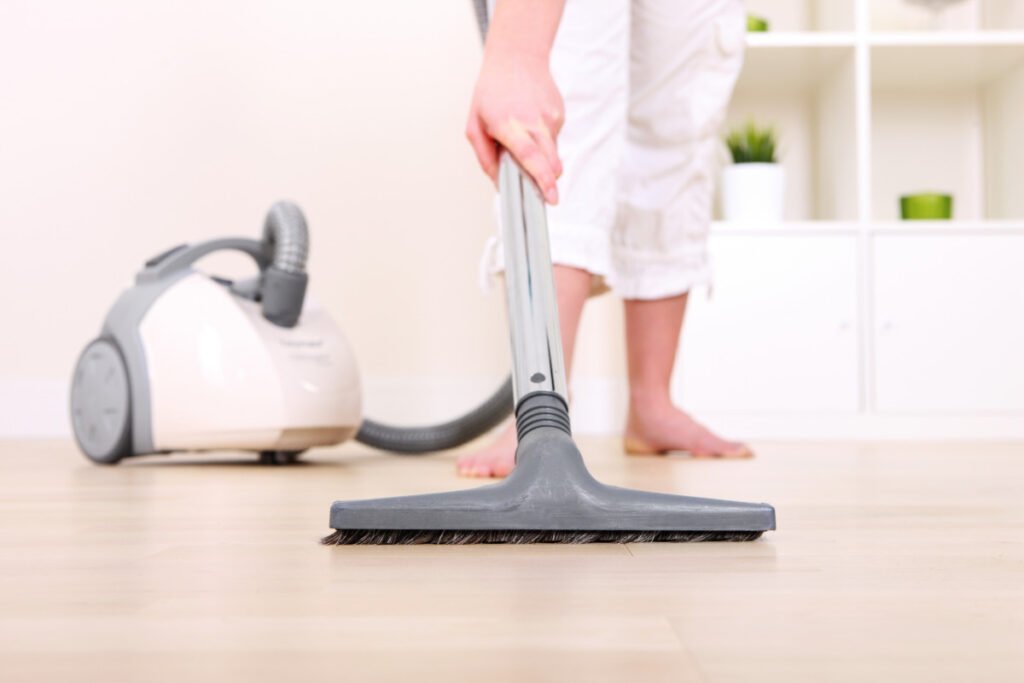
You might be wondering why it matters how many amps my vacuum cleaner uses. Well, there are several reasons why understanding your vacuum’s power consumption is important:
✨Energy Efficiency and Cost Savings
Understanding the amp usage of your vacuum cleaner is not just about numbers and specifications. It’s crucial to achieving energy efficiency and cost savings in your home. But how does this work, you might ask?
Well, every electrical appliance you use contributes to your overall electricity consumption. And as we know, the higher the consumption, the higher the utility bill. By knowing the amp usage of your vacuum cleaner, you can gauge its contribution to your total electricity usage.
Moreover, being aware of your vacuum cleaner’s power consumption allows you to make informed decisions when using it. For instance, you might vacuum more frequently for shorter periods instead of one long, power-consuming session. Or, you might be more diligent about cleaning or replacing filters to maintain optimal efficiency.
Remember, every bit of energy saved reduces your utility bill and lessens the strain on our planet’s resources. So, by understanding your vacuum cleaner’s amp usage, you’re taking a step towards a greener, more sustainable lifestyle.
✨Safety Considerations
Knowing your vacuum cleaner’s amp usage extends beyond energy efficiency and cost savings. It also plays a crucial role in ensuring safety in your home.
Electrical outlets and circuits in your home can handle a certain amount of current, measured in amps. If the total current drawn by all appliances exceeds this limit, it could overload the circuit, leading to potential hazards like electrical fires.
By knowing the amp usage of your vacuum cleaner, you can ensure that it’s safe to use with other appliances on the same circuit. It is particularly important for high-amp appliances like upright vacuums, which can draw significant currents.
Understanding your vacuum cleaner’s amp usage is a proactive measure toward maintaining a safe home environment. It equips you with the knowledge to prevent potential hazards and ensure that your cleaning routine is efficient and safe.
Frequently Asked Questions
Q: Does a more powerful vacuum cleaner use more amps?
A: Yes, typically, a more powerful vacuum cleaner does use more amps. The power of a vacuum cleaner is often directly related to its electrical consumption, measured in amps. Therefore, a vacuum with a higher vacuum cleaner wattage, which indicates its power, will generally use more amps. However, it’s important to note that efficiency and cleaning performance are not solely determined by power. Factors such as design, suction strength, and the filter’s condition also play significant roles.
Q: How can I reduce the energy my vacuum cleaner uses?
A: There are several ways to reduce the energy consumption of your vacuum cleaner. First, regular maintenance is key. It includes cleaning or replacing filters as needed to ensure maximum efficiency. Second, consider the length of your vacuuming sessions. Shorter, more frequent sessions could use less energy than long, infrequent ones. Third, choose the right setting for the job. Using a high-power setting when a lower one will do can unnecessarily increase power consumption. Lastly, unplug your vacuum cleaner when it’s not in use, as it can still draw power even when switched off.
Q: Can a high-amp vacuum cleaner cause an electrical circuit to trip?
A: Yes, using a high-amp vacuum cleaner can cause an electrical circuit to trip. It usually happens when the total current drawn by all the appliances on the same circuit exceeds its capacity. If your vacuum cleaner draws a significant amount of current, it could overload the circuit when used concurrently with other high-amp appliances. It’s advisable to know the amp usage of your vacuum cleaner and the amp capacity of your circuits to prevent this, ensuring you don’t exceed the latter.
Q: Are there energy-efficient vacuum cleaners that use fewer amps?
A: Absolutely, there are energy-efficient vacuum cleaners available on the market. These models are designed with power-saving features and optimized performance to minimize energy use. Some models have energy-saving modes that use fewer amps while delivering satisfactory cleaning results. To identify an energy-efficient model, look for Energy Star ratings or other certifications related to energy conservation. It’s also best to read product reviews and specifications to understand a vacuum cleaner’s energy usage.
Conclusion
Understanding the amp usage of your vacuum cleaner is more than just a deep dive into product specifications. It’s about empowering yourself with knowledge to make informed decisions, leading to energy efficiency, cost savings, and safer household practices. More so, it’s about appreciating the intricate relationship between our daily activities and the larger world of energy usage and sustainability.
And now, we pass the baton to you. We invite you to share your experiences, insights, or queries in the comment section below. Your thoughts enrich our collective understanding and foster a community of knowledge seekers. Whether you’re an expert in the field, a curious homeowner, or someone who stumbled upon this piece out of sheer curiosity – your voice matters. So go ahead. Let’s keep this conversation going. Because in the world of knowledge, there’s always room for more.



